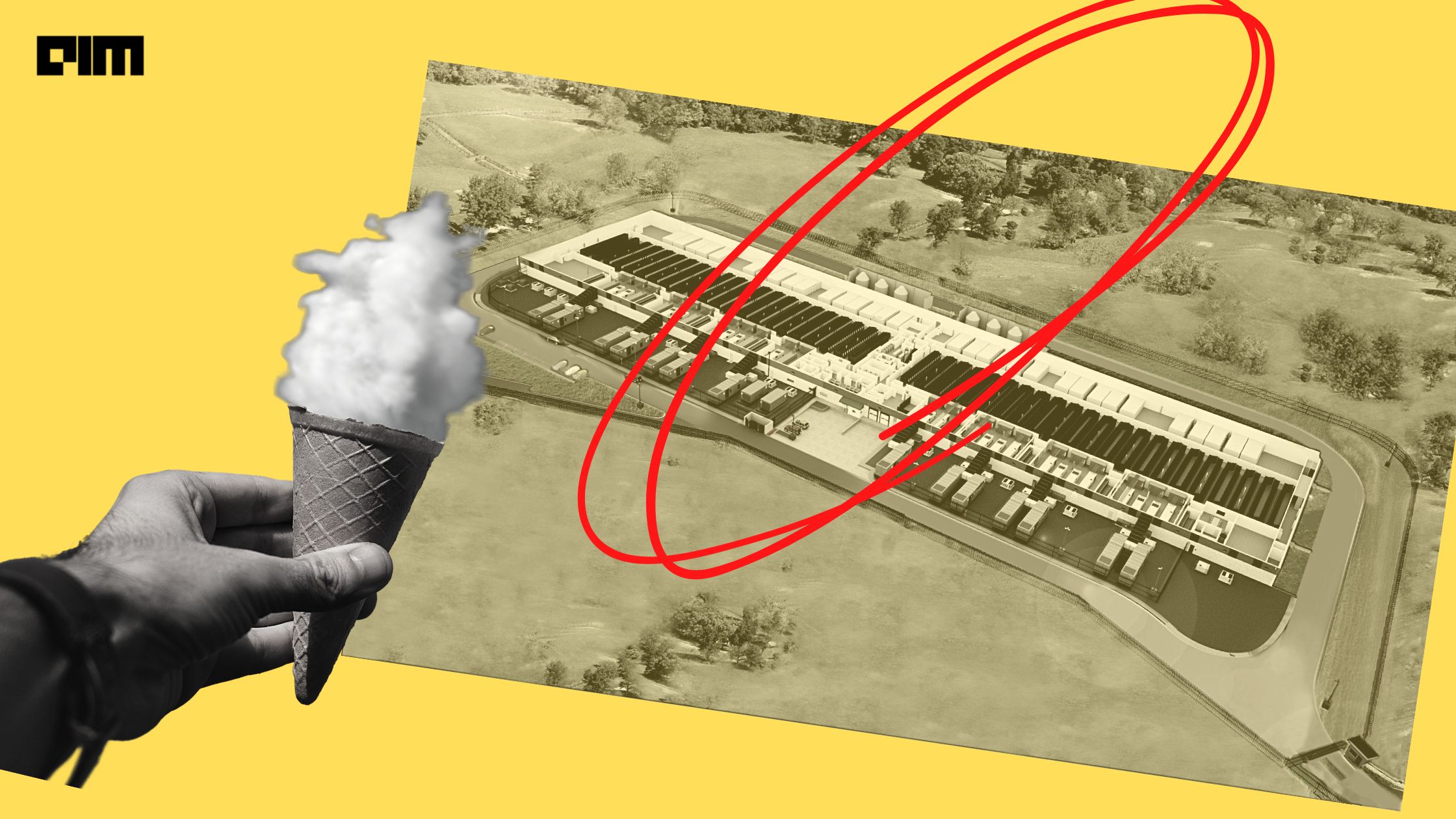|
Listen to this story
|
With a market share of around 34 percent, Amazon Web Services (AWS), is the most popular cloud services provider globally, ahead of competitors – Microsoft Azure and Google Cloud. In India too, AWS remains one of the most popular cloud service providers.
Guru Bala, head of solutions architecture, AWS Specialised Services, AISPL, in an exclusive conversation with Analytics India Magazine, said that AWS works closely with organisations of all sizes, from enterprises to startups, to enable them to leverage the AWS AI/ML stack to build solutions that solve challenges in the industry. Further, Bala discusses AWS’ service offerings, their plans in India and sustainability.
What is AWS doing to make its data centre green, specifically in India?
According to 451 Research, Indian companies and public sector organisations that migrated computing workloads from on-premises data centres to cloud infrastructure could expect to reduce their energy use – and associated carbon footprint – by nearly 80%.
One of the most visible ways AWS is using innovation to improve power efficiency is our investment in AWS chips. Our third generation Arm-based processor AWS Graviton3, is more energy efficient, as Graviton3-based Elastic Cloud Compute instances use up to 60% less energy for the same performance than comparable Amazon EC2 instances. Inferentia is our most power-efficient inference processor. On many workloads, Inferentia is about twice as power-efficient when compared to GPU-based inference.
For AWS, running our operations sustainably also means reducing the amount of water we use to cool our data centres. Our holistic approach minimises both energy and water consumption in our data centre operations and guides the development of our water use strategy for each AWS region—which starts with evaluating climate patterns, local water management and availability, and opportunities to avoid using drinking water sources.
In collaboration with global nonprofits water.org and WaterAid, AWS has provided access to clean water for more than 250,000 Indian citizens in the states of Maharashtra, Telangana, and Andhra Pradesh, India, since 2020. AWS plans to accelerate its work around improving access to clean water, developing sustainable sanitation operations, and improving the water efficiency of its own operations, in India and around the world.
As part of our goal to reach net-zero carbon by 2040, Amazon is on a path to powering its operations with 100% renewable energy by 2025—five years ahead of our original target of 2030. Amazon was the world’s largest corporate buyer of renewable energy and in 2021, we reached 85% renewable energy across our operations.
Furthermore, we recently announced our first utility-scale renewable energy projects in India – three solar farms located in Rajasthan. These include a 210 MW project to be developed by India-based developer ReNew Power, a 100MW project to be developed by local developer Amp Energy India, and a 110MW project to be developed by Brookfield Renewable. Combined, these solar farms have the capacity to generate 1,076,000 MW hours of renewable energy per year, enough to power over four million average-sized households in New Delhi annually.
Tell us about your plans in India and how do you perceive the Indian market?
Our mission is to empower builders and businesses to build a better India and we want to be a force that moves India forward. We are committed to investing in India and putting the power of AWS Cloud directly in the hands of customers, including enterprises, startups, small and medium businesses, or developers.
We continue to invest in India for the long-term. In November 2020, we announced the expansion of our services and are planning to include a second infrastructure region in India by 2022. The new AWS Asia Pacific (Hyderabad) Region will consist of three Availability Zones at launch. This will provide customers with more flexibility and choice, while allowing them to architect their infrastructure for even greater fault tolerance, resiliency, and availability across geographic locations.
Tell us a bit about the AI and machine learning services from AWS?
AWS offers the broadest and deepest set of machine learning services and supports cloud infrastructure, putting machine learning in the hands of every developer, data scientist and expert practitioner. We work closely with organisations of all sizes, from enterprises to startups, to enable them to leverage the AWS AI/ML stack to build solutions that solve challenges in the industry.
More customers prefer to use our machine learning services due to our broad portfolio of services at the three layers of the technology stack. At the bottom of the stack, we offer Inf1, TRN1 instances, along with P3, P4 and G5 instances.
At the middle layer of the stack, organisations which want to use machine learning in an expansive way can leverage Amazon SageMaker, a fully-managed service that removes the heavy lifting, complexity, and guesswork from each step of the ML process, empowering everyday developers and scientists to successfully use ML.
At the top layer of the stack, we provide solutions, such as Amazon Rekognition to extract information and insights from your images and videos, Amazon Polly that turns text into lifelike speech, Amazon Lex for building conversations, and Amazon Transcribe for converting speech to text. Then there is Amazon Translate for translating text between languages. Apart from this, our customers also collaborate with the Amazon Machine Learning Solutions Lab to implement real-life use cases.
How AWS services like Amazon Comprehend, Amazon Textract and Amazon Rekognition are pioneering interesting innovations? Can you share some use-cases in this regard?
Amazon Rekognition offers pre-trained and customisable computer vision (CV) capabilities to extract information and insights from your images and videos. Some of the interesting use cases of Amazon Rekognition are detecting inappropriate content, verifying identity online, streamlining media analysis and sending connected home smart alerts.
For example, WeShine Tech—a startup focused on university examination process automation, built a facial recognition service using Amazon Rekognition within a week to allow for remote exam proctoring during the lockdowns. Another example is WorkApps that was able to verify customer identities in near real-time for online KYCs during the pandemic.
Amazon Comprehend is an NLP service that uses machine learning to uncover valuable insights and connections in text. With this, customers can mine business and call centre analytics, index and search product reviews, automate the extraction of insights from packets of legal briefs such as contracts and court records, and process financial documents.
An interesting example of this is FINRA in the US, which is a not-for-profit organisation dedicated to investor protection and market integrity. FINRA receives millions of documents with unstructured data to support investigative, examination, and compliance processes. Their investigators and examiners had to manually go through documents page by page. With Amazon Comprehend, the company was able to quickly extract individuals and organisation data, and do much more.
Lastly, Amazon Textract automatically extracts text, handwriting, and data from scanned documents. It goes beyond simple optical character recognition (OCR) to identify, understand, and extract data from forms and tables. Today, many companies manually extract data from scanned documents such as PDFs, images, tables, and forms, or through simple OCR software that requires manual configuration.
To overcome these manual and expensive processes, Textract uses ML to read and process any type of document, accurately extracting text, handwriting, tables, and other data with no manual effort. For example, India’s leading fintech startup Paytm used Amazon Textract to extract user data from images of complex identity documents with 97% accuracy.













































































